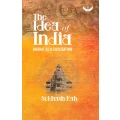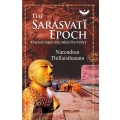

Beyond the Aryan Invasion Theory: In Quest of the Vedic Horse
Short Description
When the Harappan civilization was subsequently discovered in 1920s, based on this Max Mueller Fatwa, it was decreed as Pre-Vedic and more importantly Non-Vedic. Mortimer Wheeler later souped up this thesis by theorizing about Aryan genocide of “indigenous” Dravaidian inhabitants of the Indus Valley.
More Information
| ISBN 13 | 9798885750790 |
| Book Language | English |
| Binding | Paperback |
| Total Pages | 266 |
| Release Year | 2023 |
| Publishers | Garuda Prakashan |
| Category | Research Civilisational Identity Culture Offers Indian Knowledge Systems (IKS) |
| Weight | 300.00 g |
| Dimension | 15.40 x 22.90 x 1.60 |
Frequently Bought Together

This Item: Beyond the Aryan Invasion Theory: In Quest of the...
₹290.00
Sold by: Garuda Prakashan
ADD TO CART



This Item: Beyond the Aryan Invasion Theory: In Quest of the Vedic Horse
Sold By: Garuda Prakashan
₹290.00
Total Price : ₹290.00
Product Details
Colonial historiography had injected huge and deliberate distortions in ancient Indian history to justify foreign rule in India. The most significant distortion was the Aryan Invasion Theory (AIT), which decreed the Aryans as alien invaders from Central Asia. Max Mueller had whimsically dated the Aryan advent and composition of the Vedas to 1200 BCE, without a shred of empirical evidence. When the Harappan civilization was subsequently discovered in 1920s, based on this Max Mueller Fatwa, it was decreed as Pre-Vedic and more importantly Non-Vedic. Mortimer Wheeler later souped up this thesis by theorizing about Aryan genocide of “indigenous” Dravaidian inhabitants of the Indus Valley.
Today, we have access to empirical data from diverse fields which establish that the Harappan and Vedic civilizations were identical, and the Aryans were indigenous—not alien. To refute this, the colonial historians cited the virtual absence of war horses and chariots in the Harappan civilization. “No Horse-No Aryan” was their abiding mantra. Today, a war chariot has been discovered at Sinauli.
The quest for the Horse is what this book is about. It seeks to establish the historicity of the mythical Sarasvati River. With 80 per cent of the Harappan settlements on its banks, this was the real cradle of not just the Indian civilization but perhaps the original Aryan Homeland (Urheitmat). The Bhirrana township there has been carbon dated to 9,500 years BP making it one of the oldest in the world history. If it was Vedic, where is the Vedic horse? This book goes to the Bhimbetka caves (dated 11,000-8,00 BP) in search of clues. Were these the Narmada Horse (Equus Namadicus) that flourished in the late ice age and early Holocene period? Was that the Vedic horse? It is time to revisit and revise India’s ancient history in the light of host of new facts.















